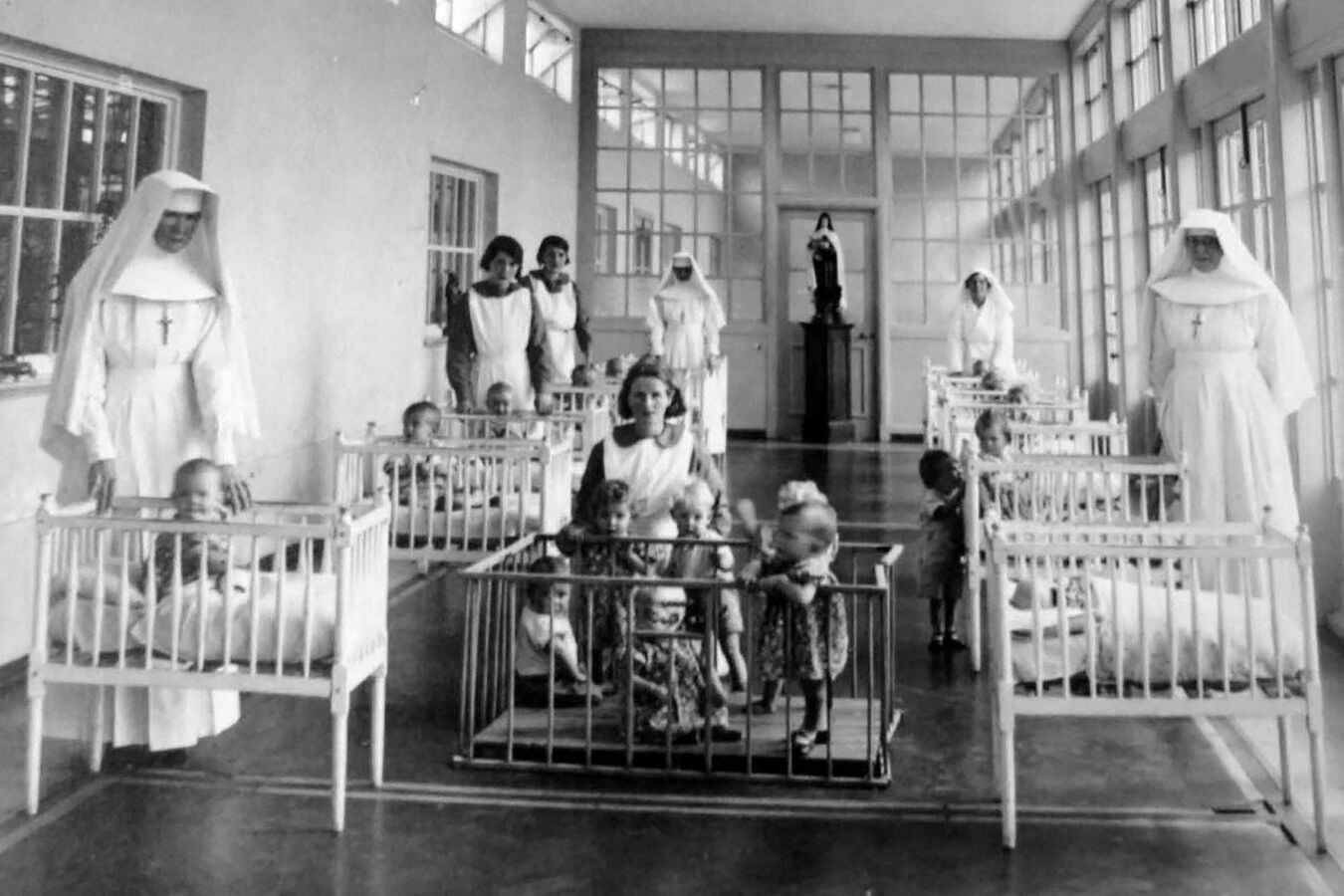
Magdalene Laundries were institutions run by Catholic orders in Ireland, where women and girls were sent to work, often under harsh conditions. These laundries operated from the 18th to the late 20th century. The women, known as "Maggies," were typically unwed mothers, orphans, or those deemed "fallen" by society. Life in Magdalene Laundries was grueling, with long hours of labor and strict discipline. Many were subjected to emotional and physical abuse. The last laundry closed in 1996, but the legacy of these institutions continues to impact survivors and their families. Understanding Magdalene Laundries sheds light on a dark chapter in history, highlighting the resilience of those who endured such hardships.
Key Takeaways:
- The Magdalene Laundries were institutions where women were exploited and abused for centuries. Public awareness and apologies have shed light on this dark chapter in history, leading to support for survivors and calls for accountability.
- The lasting impact of the Magdalene Laundries continues to affect survivors and society, leading to increased advocacy, educational programs, and legal reforms. Understanding this history is crucial for preventing future abuses.
Magdalene Laundries: A Dark Chapter in History
Magdalene Laundries were institutions run by Catholic orders where women, often referred to as "fallen women," were sent to work. These institutions have a grim history that has only recently come to light.
-
Magdalene Laundries operated in Ireland from the 18th to the late 20th century. These institutions were established to house women deemed "immoral" or "fallen."
-
The name "Magdalene" comes from Mary Magdalene, a biblical figure. She was often depicted as a repentant sinner, which influenced the naming of these institutions.
-
Women were sent to Magdalene Laundries for various reasons. These included having children out of wedlock, being victims of abuse, or simply being considered "troublesome."
-
The first Magdalene Laundry in Ireland opened in 1765. It was established in Dublin by the Protestant Church of Ireland.
-
Catholic orders took over the operation of these laundries in the 19th century. This shift marked a significant increase in the number of women confined.
-
Women in Magdalene Laundries were forced to work without pay. They often labored in harsh conditions, washing clothes for local businesses and institutions.
-
The laundries were self-sufficient and profitable. The unpaid labor of the women generated significant income for the religious orders running the institutions.
-
Many women spent their entire lives in these laundries. Some were never allowed to leave, effectively making them prisoners.
-
The last Magdalene Laundry in Ireland closed in 1996. This marked the end of over two centuries of institutionalized exploitation.
-
Survivors of Magdalene Laundries have shared harrowing stories. These accounts include physical, emotional, and psychological abuse.
The Hidden Lives of Magdalene Women
The women in Magdalene Laundries lived under strict and often cruel conditions. Their stories reveal a hidden world of suffering and resilience.
-
Women were often given new names upon entering the laundries. This practice was meant to strip them of their identities.
-
Communication with the outside world was severely restricted. Many women were not allowed to write letters or receive visitors.
-
Punishments for disobedience were harsh. These included solitary confinement, deprivation of food, and physical beatings.
-
Education was minimal or non-existent. The focus was on labor rather than learning, leaving many women illiterate.
-
Healthcare was often neglected. Many women suffered from untreated illnesses and injuries.
-
Women were forced to wear uniforms. These garments were often plain and uncomfortable, further stripping them of individuality.
-
Religious instruction was a significant part of daily life. Women were required to attend Mass and participate in religious activities.
-
Many women were buried in unmarked graves. This practice made it difficult for families to locate their loved ones.
-
The laundries were often isolated from communities. This isolation made it easier to control the women and keep their stories hidden.
-
Survivors have described the laundries as prisons. The lack of freedom and harsh conditions contributed to this perception.
Public Awareness and Apologies
The truth about Magdalene Laundries has only recently come to light, leading to public outcry and official apologies.
-
The Irish government issued an official apology in 2013. This apology acknowledged the suffering of the women confined in Magdalene Laundries.
-
A compensation scheme was established for survivors. This scheme aimed to provide financial redress for the abuse and exploitation endured.
-
The United Nations has condemned the Magdalene Laundries. They described the treatment of women as a form of slavery.
-
Several documentaries and films have been made about Magdalene Laundries. These works have helped raise awareness about the issue.
-
The laundries have been the subject of numerous books. Authors have explored the history and impact of these institutions.
-
Memorials have been erected to honor the women. These memorials serve as a reminder of the suffering endured.
-
Survivors have formed support groups. These groups provide a space for sharing experiences and advocating for justice.
-
The Catholic Church has faced significant criticism. Many have called for greater accountability and transparency.
-
Some religious orders have issued apologies. These apologies have been met with mixed reactions from survivors.
-
The Magdalene Laundries scandal has led to broader discussions. These discussions focus on the treatment of women and the role of religious institutions.
The Lasting Impact of Magdalene Laundries
The legacy of Magdalene Laundries continues to affect survivors and society. Understanding this impact is crucial for ensuring such abuses never happen again.
-
Survivors often struggle with trauma. The abuse and exploitation experienced have long-lasting psychological effects.
-
Many survivors have difficulty trusting institutions. The betrayal by religious and governmental bodies has left deep scars.
-
Families of survivors also feel the impact. The separation and secrecy surrounding the laundries have caused generational trauma.
-
Public awareness has led to increased advocacy. Efforts to support survivors and prevent future abuses have gained momentum.
-
The Magdalene Laundries have influenced popular culture. References to these institutions appear in literature, film, and art.
-
Educational programs have been developed. These programs aim to teach future generations about the history and impact of Magdalene Laundries.
-
The scandal has prompted legal reforms. Changes in laws and policies aim to protect vulnerable populations from similar abuses.
-
The story of Magdalene Laundries serves as a cautionary tale. It highlights the dangers of unchecked power and the importance of human rights.
Reflecting on Magdalene Laundries
Magdalene Laundries, shrouded in secrecy, left a lasting impact on countless women. These institutions, often run by religious orders, were places of forced labor and harsh conditions. Women, many of whom were sent there for perceived moral failings, endured years of hardship. The laundries operated in several countries, with Ireland being the most notorious. Survivors' stories reveal the emotional and physical toll these places took.
Public awareness grew over time, leading to investigations and apologies from governments and religious institutions. The laundries' legacy serves as a stark reminder of the importance of human rights and dignity. Understanding this dark chapter in history helps ensure such injustices aren't repeated. The resilience of the women who survived these laundries is a testament to the human spirit's strength. Their stories deserve to be remembered and honored, shedding light on a painful past.
Frequently Asked Questions
Was this page helpful?
Our commitment to delivering trustworthy and engaging content is at the heart of what we do. Each fact on our site is contributed by real users like you, bringing a wealth of diverse insights and information. To ensure the highest standards of accuracy and reliability, our dedicated editors meticulously review each submission. This process guarantees that the facts we share are not only fascinating but also credible. Trust in our commitment to quality and authenticity as you explore and learn with us.


